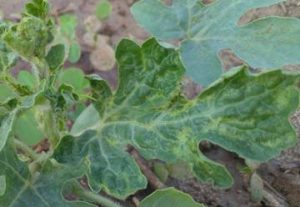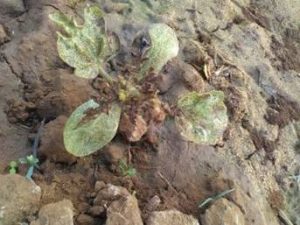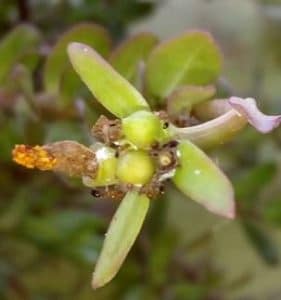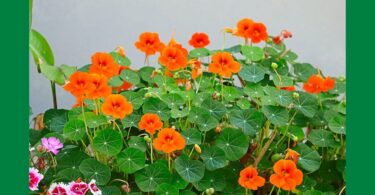Radko Tichavsky is a Czech born Mexican Agrohomeopath. He is a co-founder and director of Instituto Comenius in Mexico and author of Handbook of Agrohomeopathy, 2007 (Spanish) and Homeopathy for Plants, 2009 (Spanish) and creator and teacher of Holohomeopathy.
Agrohomeopathy Course!
Radko Tichavskyi is now offering a one semester virtual course in Agrohomeopathy (in English). You can learn how to define and analyze holons and how to repertorize the specific homeopathic treatment beyond just disease or pest names. You can find out more here: www.icomenius.edu.mx
A Materia Medica and Repertory for Plants: Mark Moodie hosts the website “Considera”, which provides a growing M.M and Repertory for plants and discusses resources for biodynamics and Agrohomeopathy .The website allows the world community to contribute their experiences in planting.
Dear Sir,
My watermelon plants are having a problem. It may be a virus. I live in South India, Andhra Pradesh state.
Latitude 17.004393
Longitude 81.783325
DMS Lat 17° 0′ 15.8148” N
DMS Long 81° 46′ 59.9700” E
The last 4 months there is no rainfall in my area. Present temperatures 35° /18°c The average daily relative humidity for February is around 80%. Winter season is at ending stage. After Feb 15 starts summer and increase temperatures (avg 40° /30°c) . I have 25 acres near Godavari River. Fifteen days ago I planted 16,000 watermelon plants in 4 acres. After planting, whitefly and some mites attacked the plants. I sprayed some chemicals but it didn’t help. A virus attacked most plants. Please kindly help me select homeopathy remedies with complete details (dose , potency and other details) .Please see my attachments.
Thank you,
Mullapudi Chowdary
Radko Tichavsky
Dear Mullapudi,
There are several ways in which the plant can become infected with the virus: from infected seeds, from other wild plants around with the help of insects (whitefly for example) and by the human manipulation with instruments passing from one plant to another. Before attending to the problem of viruses, it is necessary to make sure that the soil is covered with mulch, ie covered with dry straw so as not to leave it exposed and to ensure optimal conditions for mycorrhizal fungi formation. The second important step is to protect the plant against sucking insects that are potential transmitters of the virus. The excess of nitrogen attracts the whitefly, and other sucking insects. Then the use of animal excrement as fertilizer or chemical nitrogen sources must be reduced. The first contacts of the plant with the virus transmitted by insects are not normally disastrous and the plant manages it and eliminates it easily. But once reinfection is constant, the plant quickly depletes its reserves of antiviral substances, the main ones in the watermelon are: Ascorbic acid, Caffeic acid, Geranial, Lauric acid, Rutin, Betasitosterol and Stigmasterol. Caffeic acid for example is found in radish of Pyrus communis, common grass, Geranial is located in Zingiber officinale, also Lauric acid can be found in Cocos nucifera for example.
The first application in this case will be Ruta graveolens 6 CH and Calcarea carbonica 6 CH to dissuade the insects and protect the plant from the reinfection hurting the epidermis of the plant. Then, to solve the problem of virus apply Pyrus communis radix 6 CH (homeopathic preparation form root of Pyrus communis) with sap of Opuntia ficus-indica the condyuvant. If this problem appears in cold temperatures one uses coco oil as coadyuvant.
Dear Mr.Tichavsky,
We in India cultivate GM cotton i.e. Bollguard cotton, but now we are facing an issue of Pink Bollworm & Spodeptera as they developed resistance to Bt cotton.
Can we use nosode of Pink Bollworm & Spodeptera to control it? If yes kindly guide how to prepare its nosode.
Thanks
Sandeep Mundada
Radko Tichavsky
Dear Sandeep,
The nosode made of Spodoptera littoralis and Pectinophora gossypiella can be useful, but mainly as a preventive. Once the pest has developed, the effect of the nosode will be rather mild, because the holon always leaves a minimal expression of the pest, approximately 10%, and this allows reinfection. This Spodoptera spp. and Pectinophora spp. resistance happens mainly as a result of the introduction of transgenic cotton (Bollgard cotton) where the genes of the plant are manipulated in a forced manner, and they trigger reactions in nature and the holon. Also the use of herbicides based on Glyphosate increases the fertility of some species for example of Spodoptera spp. and Pectinophora spp. In this sense the combination of homeopathy with the so-called agricultural technological packages, whether using agrotoxic or transgenic crops, does not have good results because a large part of the problems are found in the technological package itself. The plagues are only a reaction to this imbalance formed by man.
You could use Staphysagria 200 CH first, then Thespecia popullea 6 CH to reduce the fertility of the population of Bollworm and Spodoptera spp. , or Usnea spp. o Letharia vulpina at 6 CH to reduce the presence of adults expecting moderate results. The nosode is prepared as follows: selects live specimens of the insect larva in question, the largest and most vigorous ones, without having applied agro-toxins. Fill half of glass container and add another half of 30% ethyl alcohol. Let it sit for a week in a place where it won’t be disturbed. That is the way the mother tincture is formed. Then take one part of mother tincture and adds 99 parts of alcohol of 30% and perform 100 vigorous sucussions. This is how 1 CH potency remedy is formed. Subsequently take one portion of the remedy 1 CH and add 99 parts alcohol 30% and perform 100 vigorous sucussions. This is how 2 CH potency remedy is formed. Repeat that process to make the desired potency remedy. The last potency can be made in water and replace the sucussions with 100 circular movements with a wooden stick. You should always dilute in proportion of 1:99 and add either sucussions or circular movements with a wooden stick, depending on the volume you handle.
Dear Radko Tichavsky,
I have a serious root knot nematode problem in my guava orchard. The guava plants are one year old. I am doing organic farming and can’t control it. I am from Hyderabad India
Thank you
Ravi Kiran
Radko Tichavsky
Dear Ravi,
Nematodes always respond to certain characteristics of the soil, mainly the clay soil, devoid of organic material, with high presence of heavy metals. The nematode´s main function in the holon is not to kill trees or plants, but to extract heavy elements, chelate them and regenerate the soil. When the soil problem is solved, the nematodes disappear. So your primary concern has to be in this case to heal the soil: add compost or tea-compost to the soil; ensure a good soil covering with mulch formed of native plants. You can cut them and leave in the same place on the soil. You can also plant clusters of Tagetes sp. and Ocymum basilicum among the trees and this will help to harmonize the nematodes with the holon and plants. Apply Cinnamomum verum essential oil in 6 CH potency on the soil, once a week for a month. After this, it will be necessary to prepare a nosode of the soil taken from your soil in the potency 6 CH and apply it once every two months in the irrigation on the soil to strengthen the mechanisms of self-balance in the soil.
Dear Sir,
I have recently got a plant for my home garden,( crassula ovate –jade) but unfortunately I see it was infected by some insects and ants. Can you make any suggestions?
Thank you
Radko Tichavsky
Dear Nagarajan,
You can apply by spray Calcarea phosphorica 6 CH with olive oil as adjuvant. Spread on the soil some Cinnamon powder to break the association of sucking insects and ants that are being given on your plant.
Dear Dr. Tichavsky,
I live in Wilmington, DE, USA. We have a dire problem which will soon be killing all the Ash trees in our neighborhood. The culprit is called the Green Ash borer. We have 305 curb trees which will be affected and will have to be replaced at $1,200 a tree. We are looking at a $300,000 expense into the next 10 years. Our dues do not cover this expense. We will have a lot of dead trees effecting property values. Also, I hate to loose the beautiful trees. This is a green beetle that lays its eggs under the bark of the trees and the new larva eat the part of the tree that nourishes the tree. Any experience with this beetle? Any suggestions as to how we can proceed with an alternative solution? I have been doing homeopathy for the past 30 years.
Thank you
Chris Mercante
Radko Tichavsky
Dear Chris,
The problem of dying forests and recent proliferation of forest plagues like pine barker beetle is linked to the climatic changes and the presence of monocultures of Pinus spp. Always more stable is the forest that combines deciduous trees with pines than one formed only by pines. When the tree is healthy, it floods the larva of the beetle with the sap and kills it, but one dehydrated or otherwise stressed tree cannot make it, so the surviving insect calls his colleagues by pheromones and marking clusters of pines to be attacked. The main remedies for this case are nosode of the beetle applied at 6 CH potency, and then Phellinus badius 6 CH (this is fungus which can be found on the dead trunks of the pines). This remedy has to be applied together with a little of an adjuvant made of a mixture of pine resin dissolved in turpentine and alcohol. Lichens are also excellent homeopathic resources, in this case Cetraria islandica, Ramalina americana and other species of Ramalina sp., Usnea spp. Xanthoparmelia spp. present already in your holon. To determine the most effective remedy for your holon you should walk a little and look at the existing lichens, identify the four species mentioned here and prepare a homeopathic remedy at 6 CH potency, spraying it with the adjuvant described above. This will revitalize your forest and minimize the recurring pests of pine barkers beetle.









Dear Radko,
How can I cure my numerous orquids from mealy bug infestation? Please, help!
I have a lot of orquids indoors in Andalucía, Spain, and some of them already for 4-5 years, some – new ones. They always used to repeat flower and they were very jealthy, this year they are somewhat slow and unhappy…. about 3 weeks ago or more I spotted white fluff on them, I prepared a solution of 90% alcohol with cinnamon powder and mixed it with water and spayed them, it helped for a while, but now some of them have got mealy bugs again… What do I do? Your collegue here suggested Mezereum 200C and Ant Tart 200C, should I buy them? How to make a solution from granules?
Thank you so much in advance!